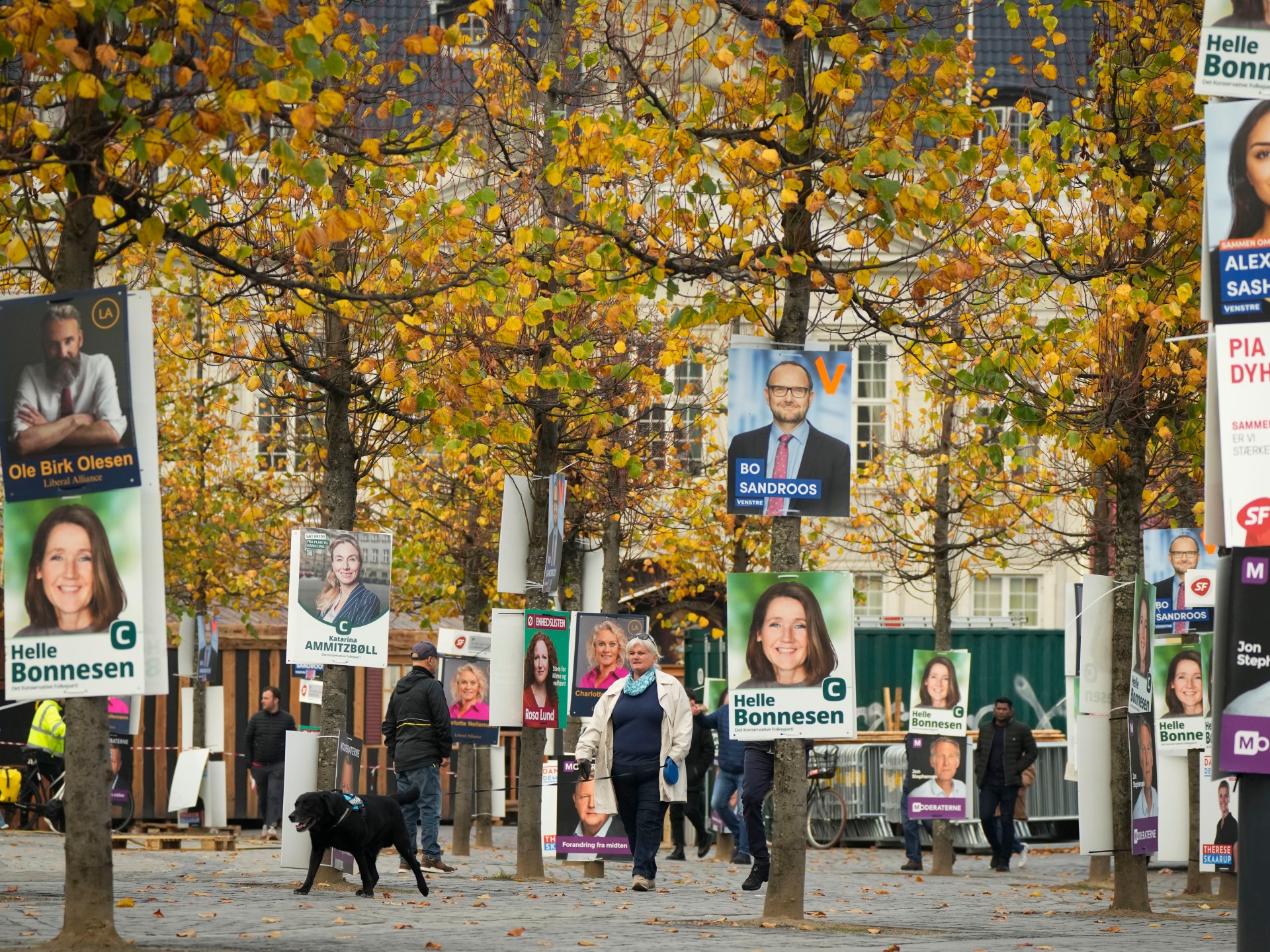As Denmark votes, I have a question: Am I welcome here? | Politics
In early September I was touched to receive a note from the Danish Parliament, congratulating me on becoming a Danish citizen. It said “Tillykke”, or “Congratulations”, and included a formal invitation to “Citizenship Day 2022” celebrations at Parliament.
This was a first. Over the decade that I have lived in Denmark, letters from immigration authorities notifying me that I had been granted a visa or residence permit had been far from congratulatory. Instead, they included lengthy descriptions of the many ways in which I could lose the residency I had just been granted.
In fact, a range of anti-immigrant and anti-asylum laws as well as an increasingly xenophobic political discourse have often made me feel unwelcome.
Will that change as Denmark votes for its next government on Tuesday in an election that pollsters predict will produce a fractured result? This is now my country, but the nice note aside, does it really want me?
The makings of an unwelcome environment
Denmark once had some of Europe’s most liberal immigration laws. Its 1983 Aliens Act gave the right of asylum to applicants while their cases were being considered and helped migrants and refugees reunite with their families in Denmark. Those protections were significantly weakened in subsequent years.
Denmark’s image as a progressive and welcoming welfare state took a beating in 2005 when artist Kurt Westergaard drew a caricature of the Prophet Muhammad, sparking outrage across the Muslim world. The Prophet Muhammad is revered by Muslims and any kind of visual depiction is forbidden in Islam.
At the time, the country was ruled by the conservative Venstre party, which relied on the support of the far-right Danish People’s Party (DPP) to stay in power. After a government report in 2011 concluded that Denmark had saved $10bn in social benefits by tightening its asylum laws, the Venstre minister for refugees, immigrants and integration made it clear that he had “no scruples in further restricting those who one can suspect will be a burden on Denmark”.
By the time I arrived in Denmark in 2012, the tide appeared to be turning. A centre-left coalition led by the Social Democrats had won the 2011 general elections and the new prime minister, Helle Thorning-Schmidt, had promised to change some of the more restrictive family reunification and asylum laws implemented by the previous government.
Yet I soon realised that the DPP was entrenched as an important political player, even out of power, and xenophobic rhetoric and anti-immigrant policies had become part of mainstream Danish politics. Thorning-Schmidt’s government actually doubled down on restrictive policies, including in 2014 when it imposed tough new rules targeting Eritrean refugees.
Forced assimilation
I’ll never forget her 2015 New Year’s speech. Thorning-Schmidt declared, “Here tonight, I want to say loud and clear: Refugees must not become social welfare clients. If you come to Denmark, you must, of course, work. You must use the skills you have. You must learn the Danish language, and you must meet and mix with Danish colleagues. You must see how we do things in this country.”
I felt an immediate sense of anxiety afterwards. Much of the focus at the time was on the integration of refugees. However, the not-so-subtle accusation was that both refugees and immigrants will always be a burden on Danish society, and it was time for us to “fall in line”. We had irked the Danish state. Now, who we were, what we spoke and what we did as “outsiders” was under greater scrutiny.
Venstre, supported by the DPP, returned to power in 2015. At that time, Europe was witnessing a sharp increase in asylum seekers fleeing the war in Syria. Shootings in Copenhagen and other such attacks across the continent created an atmosphere in which pushing through xenophobic policies became easier for the Danish government.
Even the opposition Social Democrats, including the current prime minister, Mette Frederiksen, backed the so-called Jewelry Law, which allowed the police to confiscate items of value from asylum seekers to cover the cost of their stay in Denmark.
The government suspended Denmark’s participation in the United Nations refugee resettlement programme and cut benefits available to asylum seekers by almost half. In 2018, the government passed a law banning the burqa and niqab and launched a set of harsh measures and laws specifically targeting what it called ghettos, socioeconomically disadvantaged areas where more than half the population is of non-Western immigrant background. A new set of restrictions made Danish permanent residency and citizenship seem like distant dreams and dealt a body blow to those like me hoping to make a permanent home and life in Denmark.
Many of these restrictive measures, including the “ghetto” plan, have continued under Frederiksen, who took office in 2019. Under these rules, people in the ghettos can face greater punishment for some crimes than in the rest of the country. Her government has revoked residency permits of Syrian refugees, arguing that it was safe for them to return home — although some of these decisions have been reversed following appeals.
Last year, despite criticism from the UN, European Union and human rights advocates, Denmark also passed a law that would allow it to process asylum applications outside Europe. An agreement with Rwanda was signed in early September this year, moving Denmark closer to setting up an asylum centre in the East African country.
This is not to say that these policies haven’t faced criticism in Denmark. Thousands across the country have protested against the deportation of Syrian refugees. Danish civil society and grassroots organisations have also worked tirelessly to mitigate the effects of restrictive laws and measures on migrant communities.
But when an immigration minister celebrates new entry restrictions with a cake or when a member of Parliament suggests that security forces should shoot at boats of undocumented migrants, it’s hard for me to feel at home. When a politician says migrants must celebrate Christian festivals to be viewed as “Danish” or when DPP posters that read “our Denmark” and feature a picture of an all-white family are plastered all over Copenhagen, I cannot help but wonder if I will ever be welcome in this country.
Hope flickers
At the moment, surveys suggest that the Danish electorate is more concerned about inflation, the energy crisis and the war in Ukraine than migration. Anti-migrant rhetoric usually peaks before elections. It hasn’t felt as virulent this time.
But it’s always around in the background. Denmark’s plans to set up the asylum centre in Rwanda and a proposal by conservative parties to allow elderly residents to refuse help from home caregivers who wear headscarves have been on the airwaves.
It’s been impossible to ignore the difference between the welcoming attitude that Denmark has shown to Ukrainian refugees, compared with those from outside Europe.
Still, I must hope for a different and better future driven less by ignorance and hate and more by compassion. For migrants seeking a better future. For refugees fleeing war and destruction. For all those who now call Denmark home.
The views expressed in this article are the author’s own and do not necessarily reflect Al Jazeera’s editorial stance.




